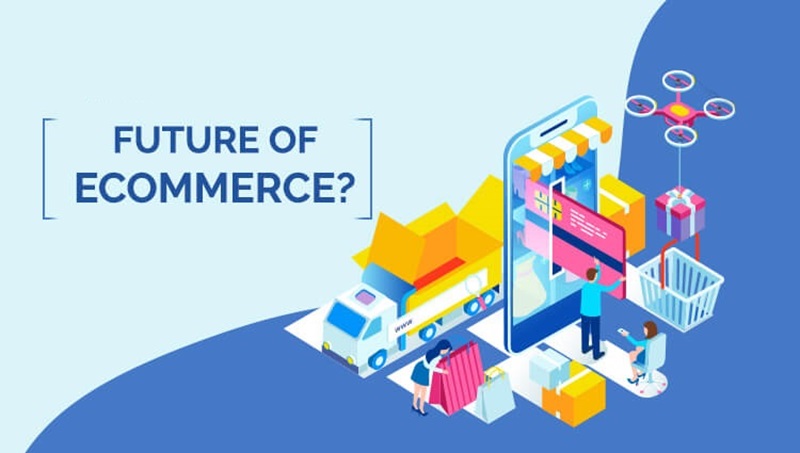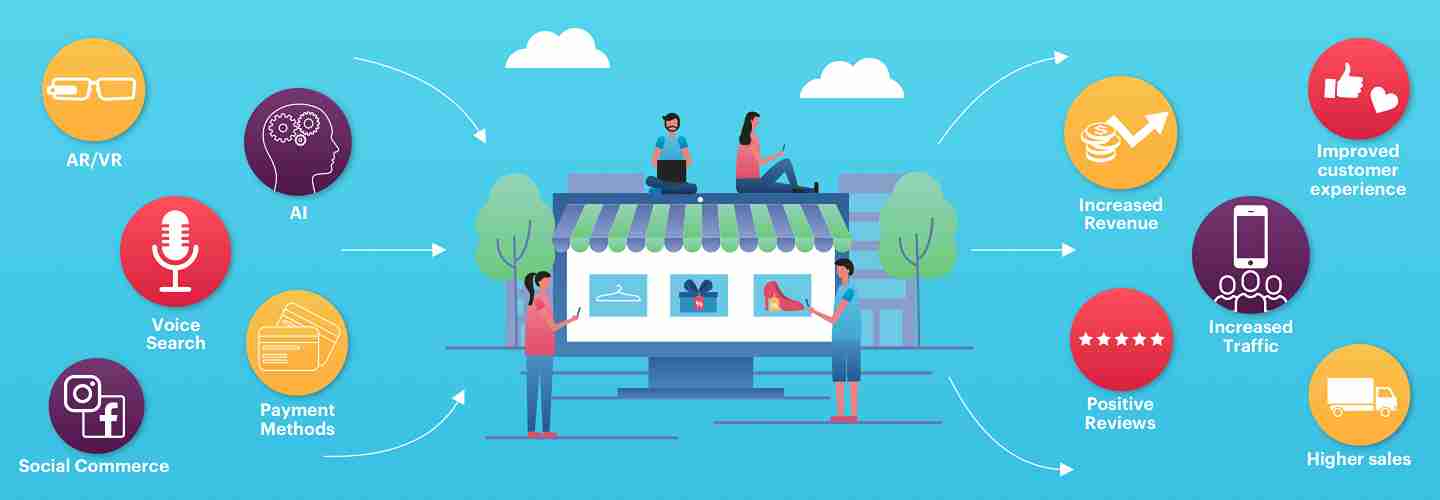The future of e-commerce in developing countries is not just a hint of possibility; it’s a surge of reality moving faster than ever. Think of bustling digital marketplaces, where tech meets tradition and growth is more than just a buzzword. As an expert who’s seen this explosion of online shops firsthand, I can tell you that this is where hidden gems become global trends. From mobile money magic to overcoming old roadblocks, I’ll guide you through these thriving markets. Ready to dive in? Let’s unlock the secrets of digital economies that are booming against all odds.
Emerging E-Commerce Markets: Nurturing Digital Economies
Online Shopping Trends and Growth Drivers
Let’s talk about shopping online. It’s soaring in places where it once didn’t. Why? More folks get online every day. Easy phone access is a big reason. Lots of people now have smartphones. So, they jump into online shopping fast! Sellers are getting smart. They make local versions of their shops to feel right at home for buyers. This helps everyone trust buying online more.
What makes this growth tick? People like stuff quick and easy. They look for good deals on the web. And if they find shopping easy, they’ll come back! Also, when friends chat about online deals, it creates a buzz. It’s like a wave that pulls more people in.
What else helps? When companies give many ways to pay, folks shop without worry. They want to know their money is safe. With better ways to pay, more people buy online.
Overcoming Barriers to E-Commerce in Developing Nations
But it’s not all smooth selling. Some bumps on the road are kinda tough. Out in rural spots, it’s hard to get things moving. Your new shoes or phone might take ages to get to you. Or worse, they might not make it at all. That’s a headache.
And then, there’s the money issue. Some places have trouble with online payments. Not every bank or card works for e-buying. This can put people off. Plus, rules about selling across borders can confuse sellers. Knowing what’s okay to sell and how to do it right isn’t always easy.
We’re seeing big steps forward, though. More schools are teaching folks about the web. They’re showing them that buying online can be safe and easy. As more people learn, they tell their friends. Then, more people want to try it out. This spreads the know-how, and more folks jump on the e-commerce train.
Also, local heroes are rising. These are folks who get what people in their own place need. They build online spots that feel just right. These local champs know how to talk to their neighbors. And that matters. Because when people feel understood, they’re more likely to click ‘buy.’
So yes, it’s not all easy. But trust me, the future looks bright. More people are trying out online shopping each day. And that’s exciting! Remember, this chat is just one part of the full picture. There are stories of cool tech moves, rules that guide e-shops, and how everything fits together to make or break the e-buying world. But, the big scoop is: Online shopping in far-flung corners of the world is growing. It’s shaking things up and paving new roads to shop and sell!
Technological Advancements and their Impact on E-Commerce
The Role of Mobile Commerce and Internet Penetration
Mobile shopping is booming in many places. More people now have phones than in the past. In many developing countries, they skip over computers. They jump right into browsing and buying on phones. This jump changes how folks shop a lot.
Internet reaching more areas also helps e-commerce grow. It lets more folks visit online stores and buy things. Without the net reaching places, e-commerce can’t grow. So, this is big for letting more people shop online.
Shops now make their sites work well on phones. They know folks use phones to shop more. This makes shopping on phones better and attracts more buyers. It’s a smart move. It helps them sell more to people near and far.
Highlighting Innovations in Payment Solutions and Platform Adaptation
Paying online can be hard in some places. Not everyone has a credit card. But new ways to pay are changing that. Mobile payments let people use their phones to pay for stuff. That makes buying things online easier for them.
Online shopping platforms are changing, too. They adapt to what local shoppers need. They add languages and offer goods that people want. They also work with local payment ways. This helps more people feel comfy buying online.
These new tech things help everyone. People get more choices for shopping. Shops sell more goods. This creates more jobs for people. It makes the shopping world bigger and better for everyone.
Tech is a friend to e-commerce, especially in growing markets. It blasts through old blocks and opens up new paths. This lets more people enjoy the thrill of getting stuff with a click. Looking ahead, this tech ride is only going up. More folks will shop online, and more goods will zip around the world. I can’t wait to see where this goes!
Building the Infrastructure: Policy and Logistics as Key Enablers
Navigating E-Commerce Laws and Regulations
In my work, I see law as a big deal for e-commerce growth. Good laws make trade easy and safe. Bad laws can stop a market from growing. In many developing areas, these laws are just starting to take shape. This makes now a key time to get in on the action. Firms that know how to work with these rules can win big.
Governments are working out how to handle taxes, data security, and customer rights. They aim to make things fair and keep buyers safe. It’s tricky to balance growth and control. Yet, they must do it to help businesses thrive online. Being clear on new laws is a must for any firm in this space.
Addressing Logistics Challenges and Last-Mile Delivery Solutions
Online shopping needs good delivery to really work. That’s a tough part in far-off places. Roads may be bad, and addresses can be unclear. This last step of delivery is a big hurdle. We call it “last-mile delivery,” and it’s where a lot of focus is right now.
Tech can help a lot here. Apps can track packages and find homes with GPS. This makes delivery faster and costs less. Bikes and drones are new ways to move goods in tough spots. These can zip through traffic or over hills where trucks can’t. This is exciting for customers waiting for their stuff!
Businesses are smart to work with locals who know the ways. They can set up spots where folks can pick up their buys nearby. This helps cut costs and makes buyers happy. Firms can also train these locals to be delivery folks. This makes more jobs, which is great for the town or city.
Both these things, laws and delivery, need smart thinking and action. They’re the keys that let e-commerce help more people. This is how we make sure that everyone can join in as buyers and sellers in the online world. That’s the future I see, and it’s full of promise.
The Intersection of Culture, Community, and Commerce
Consumer Behavior Adaptation and Digital Literacy
Now, let’s chat about people buying stuff online in far-off places. It’s picking up fast! More folks are getting comfy using the web to shop, thanks to phones and better internet. This shift is huge for e-commerce growth in emerging markets. Lots of new customers are joining every day.
So, what’s happening? People are learning the ropes of digital markets. They’re figuring out how to search, choose, and pay online. That’s digital literacy, and it’s vital. It makes sure folks can join in on the e-commerce fun. We see online shopping trends changing because more people know how to shop smart.
This know-how is also shaping e-commerce platforms adaptation. They’re getting better at showing things folks want to buy. They’re adding payment solutions for online shopping that work best for local buyers. These small changes help everyone find what they need and trust buying it.
Yes, there are humps on this road. Barriers to e-commerce in developing nations are real. But each day, we’re smoothing them out. From teaching more about the web to getting goods to doorsteps, there’s work to be done. And doing it right means more jobs and new chances. This isn’t just buying and selling; it’s about making lives better.
The Rise of Local E-Commerce Players and Their Global Impact
Okay, onto our local e-commerce champs. You know, the home team. They’re sprouting up like flowers after rain! These local stars understand what people in their area like. That gives them an edge. It’s what I like to call e-commerce localization strategies in action.
They’re flipping the script on big global players. They offer stuff that folks around them really want. They wrangle with local logistics challenges in e-commerce like pros. Their stuff gets to buyers fast, thanks to smart last-mile delivery solutions.
Because of these local heroes, mobile commerce expansion is blasting off. They match their sites and apps to local mobile habits. It’s perfect for internet penetration in developing countries. People love it because it’s all made for them.
But the cool part? They’re also reaching across borders. It’s showing the whole world the punch of cross-border e-commerce potential. This isn’t just good news for them. It’s awesome for everyone. It means more choices and better stuff for buyers near and far.
Local e-commerce players are also huge for the community. They show how joining global markets can work even from small towns. They make jobs and help people learn new tech skills. They prove that with the right mix of culture, community, and commerce, the sky’s the limit for markets just getting started with e-commerce.
So, here’s the lowdown. Digital markets are bustling towns at the heart of a global village. Every new person with a phone and a net connection is a fresh face in town. And those local e-commerce champs? They’re like the friendly shop owners who know everyone by name. Together, they’re making their towns richer, livelier, and plugged into a world of chances.
In this post, we dove into the world of e-commerce and saw its rise in new markets. We began by looking at how online shopping is changing and growing, especially in places where it’s just starting. There are hurdles, sure, but people are finding smart ways to get over them.
Then, we saw how cool tech stuff is making buying things online even easier. Phones and the internet are super important here, and so are new ways to pay for stuff.
Building the right rules and ways to move things around matters a lot too. It’s big for making sure when you buy something, it gets to you the way it should.
At the end, we talked about how our culture and community shape how we shop and who we buy from. Even small shops can now play in the big leagues.
All this tells us one thing: shopping isn’t just in stores anymore. It’s big online, and it’s reaching every corner of the planet. It’s exciting to see how this will change the way we buy and sell!
Q&A :
How is e-commerce expected to evolve in developing countries?
The future of e-commerce in developing countries looks promising, with significant growth potential. As smartphone penetration increases and internet access becomes more widespread, more consumers are expected to shop online. Additionally, improvements in payment infrastructure, logistics, and local digital economies are set to drive e-commerce growth. Governments are increasingly recognizing the value of e-commerce for economic development, which should lead to supportive policies and investment in the necessary framework to facilitate this growth.
What challenges might e-commerce face in developing countries?
E-commerce in developing countries often faces challenges such as limited access to the internet, underdeveloped logistics infrastructure, and low banking penetration, which restricts the growth of online payments. Moreover, consumer trust is also a significant barrier, with concerns over product authenticity and return policies. Addressing these challenges will be crucial for the sustainable growth of e-commerce in these markets.
What impact could e-commerce have on the economy of developing countries?
The impact of e-commerce on the economies of developing countries can be transformative. E-commerce can create jobs, both directly and indirectly, support small and medium-sized enterprises to reach a broader market, and contribute to a more significant portion of the gross domestic product. Moreover, it can encourage technological advancements and innovation, improve the efficiency of local markets, and enhance consumer access to goods and services.
In what ways can local businesses in developing countries benefit from the growth of e-commerce?
Local businesses in developing countries can leverage e-commerce as a platform to access new markets beyond their geographical limitations. This expansion can lead to increased sales and revenue. E-commerce also allows businesses to understand consumer behavior better through data analytics, enabling them to tailor their offerings to meet customer needs more effectively. Additionally, through e-commerce, businesses can streamline their operations, reduce costs, and become more competitive on a global scale.
How can developing countries prepare for the future of e-commerce?
Developing countries can prepare for the future of e-commerce by investing in their digital infrastructure, such as broadband and mobile networks, to ensure reliable and widespread internet access. Education and training programs to develop digital skills among the workforce are also critical. Moreover, creating a favorable legal and regulatory framework for online businesses, aligning with global e-commerce standards, and fostering partnerships between the public and private sectors can provide a strong foundation for the future growth of e-commerce.






